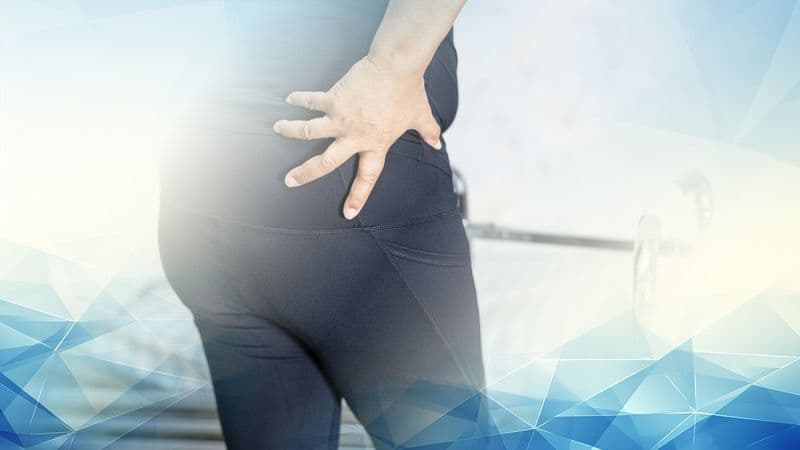About
Two-step, minimally invasive solution to hip replacement surgery
The bikini incision and SPAIRE technique are minimally invasive solutions to hip replacement surgery. They both aim to reduce tissue damage and improve recovery, offering a brilliant alternative to traditional hip replacement surgery.

Two-step, minimally invasive solution to hip replacement surgery
Not Needed
Instant-book option available

Hip replacement using the Bikini or SPAIRE approach is a modern, minimally invasive technique designed to restore mobility and relieve chronic hip pain. The Bikini approach involves a cosmetically placed incision along natural skin lines, while SPAIRE preserves key muscles and tendons. These advanced methods minimise tissue damage, promote faster recovery, and reduce post-operative pain. A damaged hip joint is replaced with a prosthetic implant that mimics the natural joint, improving function and quality of life.
Osteoarthritis: The most common cause, leading to cartilage loss, stiffness, and chronic hip pain.
Hip fractures: Severe fractures, especially in older adults, may require full joint replacement.
Rheumatoid arthritis: Chronic inflammation damages cartilage and joint lining over time.
Avascular necrosis: Reduced blood supply to the hip causes bone collapse and joint failure.
Developmental conditions: Structural abnormalities such as hip dysplasia can lead to early degeneration.
Diagnosis begins with a detailed clinical assessment of symptoms like hip stiffness, reduced mobility, and persistent pain during activity or rest. Patients are often evaluated for their ability to walk, sit, and perform daily activities. Imaging studies, including X-rays and MRI scans, help assess the extent of joint damage and confirm whether the cartilage is worn or bone surfaces are deformed. When conservative treatments such as medication or physical therapy are no longer effective, hip replacement may be recommended. The Bikini or SPAIRE method is selected based on patient anatomy and recovery goals.


The bikini SPAIRE treatment is a two-step approach to hip replacement.
The bikini incision, along the bikini line, avoids major muscle and tendon disruption, unlike the traditional hip replacement scar which is on the front, side or back of the hip. This can lead to quicker recovery times, as well as reduced postoperative pain and scarring.
Following the bikini incision, the SPAIRE (Spare Piriformis And Internus, Repair Externus) is a modern approach to hip replacement that aims to preserve the muscles and tendons around the hip joint. The traditional approach to replacement goes through the posterior tendons, however, these tendons are incredibly important for standing from seated and for climbing stairs.
The SPAIRE approach spares these tendons, meaning there is less trauma to the joints and surrounding area. This leads to faster recovery with fewer complications.

The incision along the bikini line avoids cutting major muscles, which reduces healing time and muscle damage
Patients experience swift recovery, with many standing and walking within 24 hours
95%+ patient satisfaction
Reduced dislocation risk due to muscle retention
We offer a range of flexible payment options to make your treatment experience smooth and stress-free.
Most patients choose to self-fund their treatment. We accept:
We’ve partnered with GoCardless to offer interest-free instalment options. You can easily set up a Direct Debit to spread the cost of your treatment over time.
Looking for a financing plan? You can apply through Kandoo, our trusted finance partner.
We work with a small number of approved insurance providers. However, due to restrictions from many insurers, not all treatments are covered. Please check with your insurer and speak to our team before booking to avoid disappointment.
Use our website to book an initial consultation, or give us a call.
Our doctors might request you arrange a scan before your initial consultation. Or, they’ll chat with you (face to face or online) and recommend a scan after your initial consultation, if they think you need one.
Once your scan results have been reviewed, and your doctor has explained your options, you will be booked in for treatment.
Following your treatment, your doctor will give you rehab recommendations.
You will be booked in for a follow-up consultation, so your doctor can check your progress. You might need further rehab after this consultation.
Once your doctor is happy with your recovery, you will be discharged. After discharge, we are always here for further questions or support, should you need it.
How do I know if this treatment is suitable for me?
What is the recovery time?

Discover expert guidance on accelerating recovery after hip replacement surgery with tailored exercises and rehabilitation tips. Learn how early gentle movements, progressive strength and flexibility routines, and professional support from specialists like ...

This article outlines essential precautions after hip replacement surgery to ensure safe, effective recovery. It emphasizes avoiding leg crossing, bending the hip beyond 90 degrees, and twisting the operated leg to prevent complications like dislocation. Ex...

This comprehensive guide outlines the typical hospital journey after hip replacement surgery, usually lasting one to three days, led by expert teams like Professor Paul Lee's at MSK Doctors. It covers admission, surgery, early recovery milestones, and the g...
We now offer select services at our Harley Street London clinic through the London Cartilage Clinic, led by internationally recognised surgeon Professor Paul Lee.
Our London clinic offers advanced treatments like cartilage regeneration and joint preservation to help patients avoid or delay joint replacement.
Located in Central London, our clinic provides convenient access to world-className musculoskeletal care without long NHS wait times.
If you would like to be seen in Central London, visit our London Clinic page for pricing, available treatments, and to book directly online.
Our Harley Street clinic uses cutting-edge techniques designed to reduce downtime and support faster, more effective recovery, getting you back to your lifestyle sooner.
Don’t wait to find relief. Whether it’s a consultation, scan, or treatment, we’re ready to help. Book a call with the admin team to discuss.